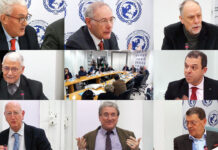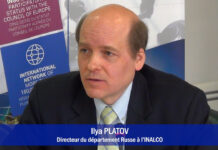Téléchargez l’article au format PDF
Ali RASTBEEN
Résumé : L’origine des problèmes de l’Afghanistan est généralement remontée aux dernières occupations étrangères du pays (soviétique, américaine). S’il est vrai que celles-ci ont largement contribué aux troubles, les problèmes afghans sont plutôt liés à la manière dont ce pays s’est formé. Le nationalisme afghan est en réalité un « pachtounisme », extrême, ancien et très ancré dans ce peuple, et vise à l’hégémonie pachtoune (pachtounisation) malgré la diversité des groupes ethniques et linguistiques présents en Afghanistan, les autres groupes (Hazaras, chiites, Tadjiks…) ayant subi crimes et discriminations jusqu’à nos jours. Leur mémoire en reste marquée. La chute « accélérée » de Kaboul (2021) s’explique en partie par le rejet qu’a suscité l’ancien président Ashraf Ghani parmi les non-pachtounes, qui ne combattirent pas pour un statu quo. Le pays est très rural et montagneux, pénétré tardivement par la civilisation moderne (1978), cette dernière s’étant de plus heurtée aux traditions et coutumes locales, que les Moudjahidines – financés par les États-Unis afin de combattre les soviétiques – sont venus exacerber et fanatiser. Les divergences pakistano-afghanes remontent au tracé de la ligne Durand (1893), frontière entre les deux États, et sont liées aux trajectoires et influences différentes suivies depuis par les deux États. La multiplicité de la politique étrangère du régime Taliban accroit le risque de conflits d’intérêts dans l’avenir. Pour maintenir une coopération stable avec les Américains, dont ils sont dépendants de l’aide, il leur faudra accepter d’être un pourvoyeur de leurs intérêts dans la région. Mais les plus grands défis pour l’avenir des Talibans résident dans les facteurs d’opposition et de division politiques internes au régime des Talibans. Les facteurs contribuant à ces divisons sont multiples et laissent entrevoir une profonde crise. L’avenir de l’Afghanistan est incertain et confronté à de nombreux défis et opportunités, dont l’issue impactera fortement les États voisins et la région en général.
Mots-clés : Afghanistan, Talibans, Asie centrale, Pachtoune, Kaboul, 15 Août 2021, Géopolitique, Relations internationales, États-Unis, URSS, Guerre froide, Occupation militaire, Nationalisme, Moudjahidines, Pakistan Qatar, Accord de Doha, Ahmad Khan Abdali, Abdur Rahman Khan, Empire britannique, Russie, Iran, Grand jeu, Hazaras, Chiites, Terrorisme islamiste, Sirajuddin Haqqani, Haibatullah Akhundzada, Herat, Kandahar, Aide humanitaire internationale, Droits humains, Développement économique, Diplomatie, Chine, Communauté internationale, Oppositions, Avenir.
THE TALIBAN AND THE FUTURE OF AFGHANISTAN
Abstract : The origin of Afghanistan’s problems is generally traced back to the last foreign occupations of the country (Soviet, American). While it is true that these largely contributed to the unrest, Afghan problems are rather linked to the way in which this country was formed. Afghan nationalism is in reality an extreme, ancient and deeply rooted « Pashtunism » in this people, and aims at Pashtun hegemony (Pashtunization) despite the diversity of ethnic and linguistic groups present in Afghanistan, the other groups (Hazaras, Shiites, Tajiks, etc.) having suffered crimes and discrimination to this day. Their memory remains marked. The « accelerated » fall of Kabul (2021) can be explained in part by the rejection that former President Ashraf Ghani aroused among non-Pashtuns, who did not fight for a status quo. The country is very rural and mountainous, penetrated late by modern civilization (1978), the latter having also clashed with local traditions and customs, which the Mujahideen – financed by the United States in order to fight the Soviets – came to exacerbate and fanaticize. The Pakistani-Afghan divergences date back to the drawing of the Durand Line (1893), the border between the two states, and are linked to the different trajectories and influences followed since then by the two states. The multiplicity of the Taliban regime’s foreign policy increases the risk of conflicts of interest in the future. To maintain stable cooperation with the Americans, on whom they are dependent for aid, they will have to agree to be a provider of their interests in the region. But the greatest challenges for the future of the Taliban lie in the factors of opposition and political division internal to the Taliban regime. The factors contributing to these divisions are multiple and suggest a deep crisis. The future of Afghanistan is uncertain and faces many challenges and opportunities, the outcome of which will strongly impact neighboring states and the region in general.
Key words : Afghanistan, Taliban, Central Asia, Pashtun, Kabul, August 15, 2021, Geopolitics, International Relations, United States, USSR, Cold War, Military Occupation, Nationalism, Mujahideen, Pakistan Qatar, Doha Agreement, Ahmad Khan Abdali, Abdur Rahman Khan, British Empire, Russia, Iran, Great Game, Hazaras, Shiites, Islamist Terrorism, Sirajuddin Haqqani, Haibatullah Akhundzada, Herat, Kandahar, International Humanitarian Aid, Human Rights, Economic Development, Diplomacy, China, International Community, Oppositions, Future.








